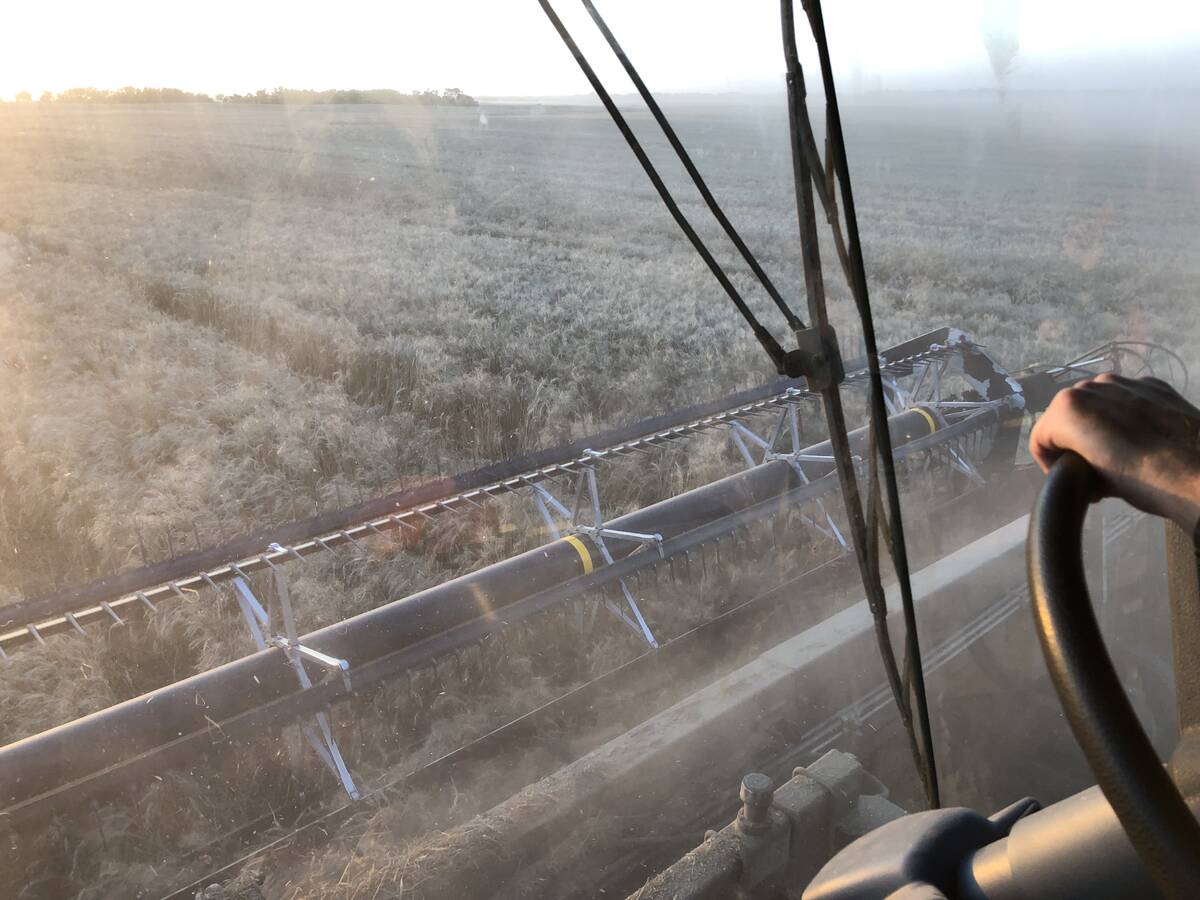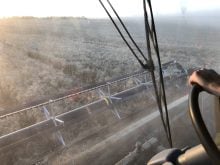With the price of granular phosphate fertilizer almost triple what it was last summer, Weldon Newton values his hog manure.
The hog and grain farmer from Neepawa, Man, applies his livestock’s nutrient–rich manure on his fields, saving a lot on the fertilizer bill.
But the manure meets only two-thirds of the nutrient needs and he doesn’t look forward to shelling out a lot of money to buy fertilizer to achieve optimum crop yields.
Rising nitrogen fertilizer prices have made headlines for more than a year, but phosphate prices have taken flight since last October.
Read Also

Mail strike disrupts grain sample delivery
The Canadian Grain Commission has asked farmers to consider delivering harvest samples directly to CGC offices, services centres or approved drop offs as Canada Post strike delays mail.
Spot di-ammonium phosphate (DAP) prices basis Florida (the main U.S. production region) were about $450 US per tonne last summer. By the start of January they had hit $600 and by April 3 had doubled to $1,200.
Fertilizer manufacturers say several factors contribute to the run up, including increased demand, soaring production costs and restrictions of exports by major producers.
Demand
Global grain and oilseed production has not kept up with rising demand, resulting in soaring grain prices.
Denita Stann, the Chicago-based director of investor relations for Potash Corp. of Saskatchewan (PCS), the world’s largest fertilizer producer and third largest producer of phosphate fertilizer, said rising incomes allow people to improve their diet.
“It’s different in every country, but $3,000 a year is a kind of magical number that allows people to start changing the way they eat,” Stann said.
“Once you start getting there, you add the meat into your diet.”
PCS says it takes about seven kilograms of grain to produce one kg of beef, four kg to produce one kg of pork and two kg to produce one kg of poultry.
U.S. Department of Agriculture statistics show China’s pork demand increased 20 percent to 47.7 million tonnes between 1998-2007, and beef demand grew 64
percent to 7.8 million tonnes.
By comparison, Canada’s pork demand grew by only 1.7 percent to 970,000 tonnes and beef grew by 16 percent to 1.1 million tonnes.
Once the new entries into the middle class start eating meat, they won’t be keen to stop, even if their economies slow.
“We think they’d give up the iPod or the television before they’ll give up the meat,” said Ashley Harris, a manager of investor relations for fertilizer producer Agrium.
That demand, along with an increasing population, booming biofuel industry and reduced harvests in some areas, drove grain markets up.
“Prices increased and farmers were encouraged by those strong prices to grow larger crops and that requires improved nutrient application,” Harris said.
China and India, each with more than a billion people, are increasing support
to farmers to encourage production to counter food price inflation.
Where Canadian farmers might use 20 to 30 pounds of phosphorus fertilizer on one crop per year, Chinese and Indian farmers, with two or three crops in their longer growing seasons, could use as much as 200 lb. due to their higher productivity.
Soaring production costs
The same factors have caused phosphate fertilizer input costs to soar.
A presentation made by PCS chief executive officer Bill Doyle to a BMO Capital Markets fertilizer conference April 2 said production costs for fertilizer producers that do not own their own sources of phosphate rock have increased dramatically.
“In addition to current (phosphate) rock prices, global costs for sulfur, another key input, have risen dramatically,” the report said.
“Now companies that rely on purchased rock and non-domestic sulfur could see their cash costs for DAP approach $1,100 per tonne.”
Sulfur is an important ingredient in the production of phosphoric acid, which is used to make DAP and mono-ammonium phosphate (MAP).
Production of sulfur, which is a byproduct of petroleum refining, has been affected by a number of accidents, shutdowns and prod-uction hiccups at refineries that have been running at nearly full capacity as oil prices linger near $100 per barrel.
A U.S. based analyst at a large fertilizer company who wished not to be named said the price of sulfur has shot up in recent months to about $250 per tonne from $50.
That’s significant because 0.4 tonnes of sulfur are needed to make a tonne of DAP.
Ammonia, of which 0.23 tonnes are needed to make a tonne of DAP, is at a record high of $600 per tonne.
Phosphate rock, the basic raw material of phosphorus, has increased from $50 per tonne to as much as $400. To make a tonne of DAP, 1.6 tonnes of rock are needed.
Exports restricted
Globally, the main sources of phosphorus for export are Tunisia, Morocco, China and the United States. Together, they account for 68 percent of global production.
China exported too much phosphate last year, leaving its farmers short. Beijing has respon-ded by banning rail shipments to ports and slapping a 35 percent export tax on DAP and MAP. Russia, also a major exporter, has added an 8.5 percent export duty.
“Several countries are trying to keep more phosphate at home,” the analyst said.
He predicted phosphate prices would stay high well into the future, so long as demand for food continues to grow.
China is expected to increase production, but primarily for its own use.
A new phosphate-mining project in Saudi Arabia promises to add three million tonnes of granulated phosphate products to the world supply of 75 million tonnes, but production is not expected to begin until 2012 at the earliest.
This project includes building a 2,000 kilometre railway to transport the phosphate rock and other minerals.
Other producers will have trouble squeezing extra product out of their facilities because of the poor availability of sulfur, he added.
New production sites will mine less accessible or lower grade rock and will have higher production costs because “all the cheap places are done,” the analyst said.
“The chances of going back to $200 DAP are extremely remote.”
What does the future hold?
Clyde Graham, vice-president of strategy and alliances for the Fertilizer Institute of Canada, said fertilizer production involves major capital investments for new mining operations and production facilities.
“New production is coming on-line for all three nutrients, but it takes time,” he said.
Academics have suggested there might be only 50 to 100 years of phosphorus rock left in the world, but industry sources say such assertions are alarmist.
Don Flaten, a soil scientist at the University of Manitoba, cited a report from the U.S. Geological Survey that says 100 to 350 years of mineable reserves remain at current extraction rates.
“We have been opening up new phosphorus reserves, but that won’t go on forever,” Flaten said.
“We should still be careful with our phosphorus reserves and in our agricultural system and try to recycle it as much as possible. That’s what livestock manure gives us the opportunity to do if we use it carefully.”
















